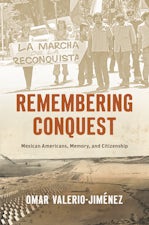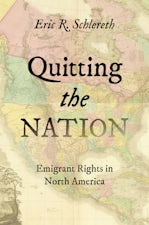Property Rites
The Rhinelander Trial, Passing, and the Protection of Whiteness
By Elizabeth M. Smith-Pryor
408 pp., 6.125 x 9.25, 10 illus., notes, bibl., index
-
Paperback ISBN: 978-0-8078-5939-1
Published: May 2009 -
E-book EPUB ISBN: 978-0-8078-9417-0
Published: April 2009 -
E-book PDF ISBN: 979-8-8908-7771-0
Published: April 2009
Buy this Book
- Paperback $42.50
- E-Book $29.99
For Professors:
Free E-Exam Copies
Elizabeth Smith-Pryor makes extensive use of trial transcripts, in addition to contemporary newspaper coverage and archival sources, to explore why Leonard Rhinelander was allowed his day in court. She moves fluidly between legal history, a day-by-day narrative of the trial itself, and analyses of the trial’s place in the culture of the 1920s North to show how notions of race, property, and the law were--and are--inextricably intertwined.
About the Author
Elizabeth Smith-Pryor is assistant professor of history at Kent State University. She practiced law in New York for six years.
For more information about Elizabeth M. Smith-Pryor, visit
the
Author
Page.
Reviews
"Offers a fascinating thesis of why so many white Americans in the 1920s had become anxious about the concept of passing."--Flavour Magazine
"Offers other fascinating discussions of the ways in which shifting notions of middle-class manhood, courtship practices, and acceptable sexual behavior, affected the course of the trial. . . . An illuminating and engaging read that is particularly suitable for an undergraduate classroom."--History News Network
"Smith-Pryor tells the trial's story in play-by-play fashion, alternating those chapters with analytical interludes that describe the complexities of race in the 1920s US. . . . Recommended."--Choice
"An enjoyable book that clarifies many of the complicated social and legal issues surrounding the dissolution of the Rhinelander marriage."--The Journal of American History
"Smith-Pryor uses the Rhinelander trial to weave a narrative of classification, confusion, and cultural dislocation in the Jazz Age. . . . Reveals much about how Americans in the Northeast lived in and across the color line and how, in the north as much as the south, white supremacy shaped property, place, and possibility."--Journal of Interdisciplinary History
“Smith-Pryor’s narrative of the trial and precipitating events is compelling. . . She delineates the complex past of the Jones family . . . with care and skill.” --African American Review




